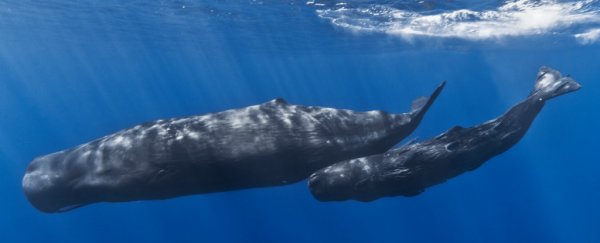The Ninth US Circuit Court of Appeals in California has ruled that the low-frequency active sonar (LFA) systems used by the US Navy for training missions violates the Marine Mammal protection Act, and negatively impacts whales, dolphins, and walruses who rely on sound to navigate the seas.
The ruling also finds that the National Marine Fisheries Service (NMFS) – the body that gave the Navy clearance to use the LFA – needs to do more to avoid the destruction of marine mammal populations and environments.
There's no word as yet on when and how this court ruling will change the Navy's policy, but it means that they're going to have to step up their game and use sonar more carefully in future to avoid harming marine animals (as well as legal repercussions).
"This systematic under-protection of marine mammals cannot be consistent with the requirement that mitigation measures result in the 'least practicable adverse impact' on marine mammals," the court said, according to Alessandra Potenza from The Verge.
Right now, the LFA system uses 18 underwater speakers to pulse low-frequency sounds at about 215 decibels for roughly 60 seconds a pop.
While that doesn't seem like much, these sounds can travel hundreds of miles and are found in roughly 70 percent of the world's oceans, which the new ruling says interrupts the daily activities of marine mammals by causing them stress, stopping their communication and mating practices, and even separates them from their calves.
"It's important to understand that the ocean is a world of sound, not sight," director of the National Resource Defence Council (NRDC)'s marine mammal project Michael Jasny told Nick Stockton from Wired. "Marine mammal species perceive these SURTASS/LFA sounds as a threat and react accordingly."
To be clear, though, the Navy does already have systems in place to avoid harming marine mammals, too.
For example, they are required to turn off sonar systems if animals are in the area and are banned from using pulses higher than 180 decibels within 22.5 kilometres (14 miles) from coasts, especially coastlines belonging to 'biologically important' areas, reports Potenza.
While no one is saying that the Navy is disobeying their current policy, the new ruling states that the measures currently in place are not doing enough to protect the sea's creatures and that new rules and guidelines need to be put in place – though they do not mention what exactly those rules might entail, or when they might be rolled out.
One of the biggest arguments the NMFS has against the ruling is whether or not marine mammals are even in the areas where the majority of the sonar is used, citing a lack of evidence and research into these areas.
In return, the court says that – if there is truly a lack of data – caution should be used rather than the wanton use of sonar everywhere. In fact, the Navy has used a similar excuse before when approached about their use of offshore tactical training missions.
"But the improper positions it took in the present case - among them, the impossibly high burden of proof it put on science to justify mitigation - are by no means limited to LFA,"Jasny said in an NRDC statement about the recent case.
"The agency has set a similarly high bar for habitat protection on the Navy's offshore ranges, where the military trains with tactical mid-frequency sonar and with explosives; and the measures it routinely prescribes for offshore oil and gas exploration and offshore construction hardly recognise, as the court does for Navy sonar, the 'paramount importance' of habitat protection," he continued.
Also, this isn't the first time the Navy has been taken to court over their LFA use. As Jasny recounts:
"This is not the first time a federal court has ruled against the Service on LFA sonar. In 2003 (NRDC vs Evans) and again in 2008 (NRDC vs Gutierrez), the courts found that the agency's mitigation measures had fallen far short of what the law requires. There, too, the Service gave the Navy worldwide clearance while refusing to protect areas that marine mammals depend on to feed, breed, nurse, and rest; and there, too, it tied itself in legal knots to do so."
The hope is that – with proper laws in place – both the Navy and the marine mammals that call the oceans home can coexist. Though to do that the NMFS has to pick up its game to make sure the laws are adequate enough to protect those animals, something that – if the court ruling is to be believed – hasn't been happening.
